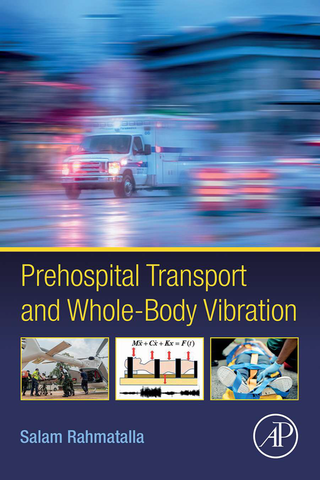A research scientist at the University of Iowa Technology Institute has authored a new book to help medical transport professionals – and vehicle and equipment designers – understand the effects of vibration on immobilized patients during emergency transport.

The book, Prehospital Transport and Whole-Body Vibration, is written by Salam Rahmatalla, director of ITI’s 3D Bio-Motion Research Lab. Rahmatalla is also professor of civil and environmental engineering and biomedical engineering in the UI College of Engineering.
Rahmatalla researches situations in which patients are exposed to whole-body vibration during transport in emergency air, sea, and ground vehicles.
Millions of trauma patients with potential spinal injuries or other severe injuries are transported to medical facilities each year using immobilization systems such as stretchers. Random vibration during prehospital transport can generate severe involuntary motion that can cause discomfort, pain, and, potentially, secondary injuries.
Emergency transport systems are composed of mechanical segments with distinctive material properties that move unpredictably when exposed to random vibration. Similarly, the human body is an intricate system that can move voluntarily and involuntarily in response to vibration. These two elements – the emergency transport system and systems in the human body – create a complex environment.

“Studies and development of immobilization systems have put tremendous effort into determining how to stabilize the cervical spine but have not had a deep awareness of the effectiveness of these immobilization systems during transport, where severe vibration and shock can take place,” Rahmatalla said.
Rahmatalla’s book is intended for students, researchers, emergency room nurses, medics, engineers, system developers, and others in these disciplines. The goal is to provide these experts with background information, basic concepts, and real-life examples of whole-body vibration during transport to increase collaboration and develop more effective immobilization systems.
“Technical regulations should be imposed on vehicle designers and manufacturers to make their vehicles more effective in reducing vibration transmitted from the ground to the immobilization system,” Rahmatalla said. “Manufacturers of immobilization systems should test and evaluate their equipment considering vibration during transport to increase their efficacy.”
The 232-page work introduces lab and field case studies and explains the different measurements and analyses used in whole-body vibration literature. Prehospital Transport and Whole-Body Vibration is scheduled to be released on Sept. 24, 2021.
